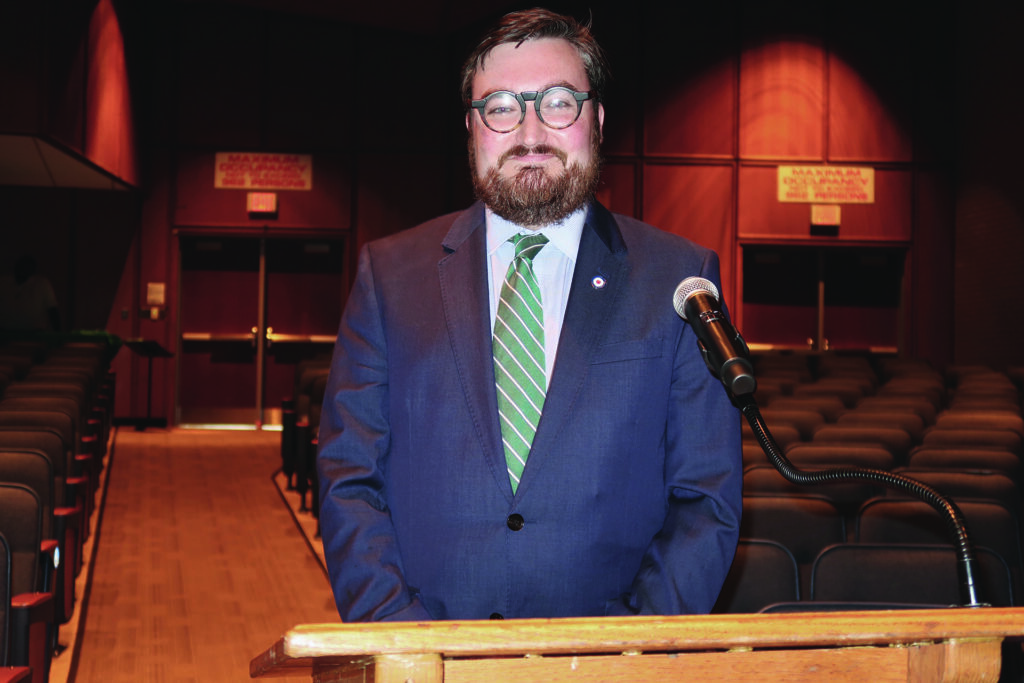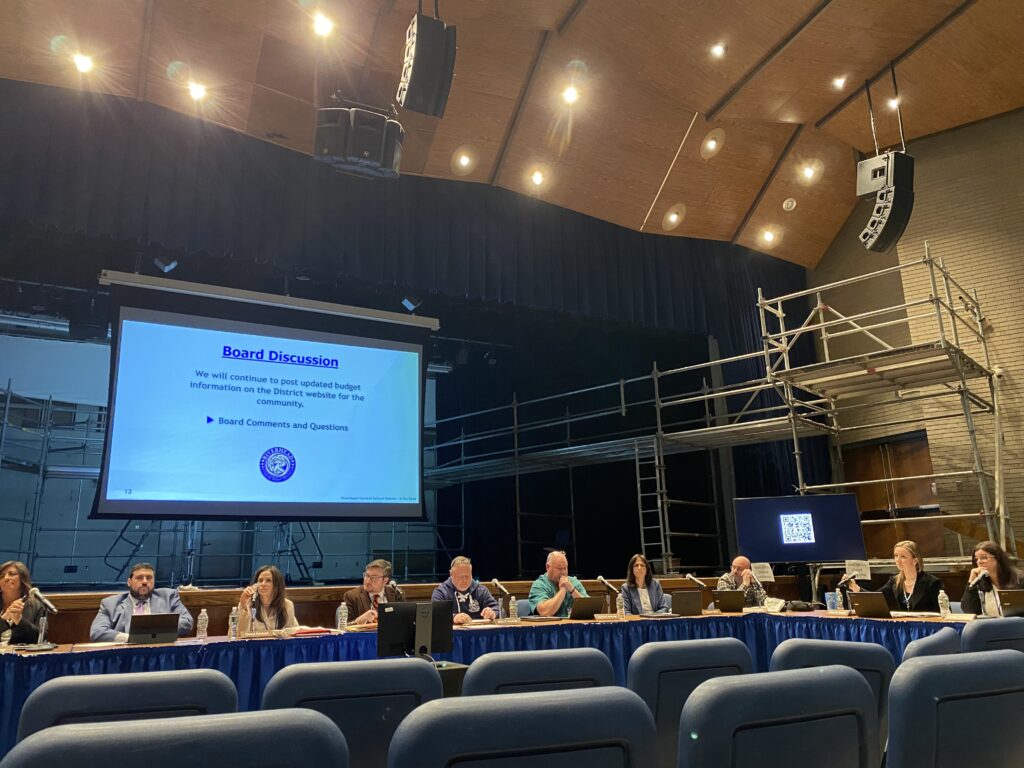Riverhead school officials reduce cost of proposed bond

Riverhead school district’s bond project would range in cost from $73.5 to $87.9 million under a revised proposal announced Wednesday. The overall price tag will depend on which of the three options the Board of Education ultimately sends to voters for approval in January.
Kevin Walsh and Gary Scheide of BBS Architects gave a revised presentation of the bond proposal at a public work session. Originally pitched Sept. 10, the presentation was updated based on early feedback from the community, Mr. Walsh said.
Prior to the presentation, Superintendent Aurelia Henriquez encouraged the audience of roughly 20 residents to provide their email to the district and share their questions, concerns and suggestions.
“This is a team effort,” she said.
The originally proposed $10.1 million field house has been removed from all three bond options. The roughly 14,000-square-foot field house would have been located on the Pulaski Fairgrounds. The field house would have included a new track and gym and a path would have connected both new buildings to the Pulaski Street and middle schools.
The district is still proposing upgrades to the fairgrounds with plans to build a new parking lot and bus loop at Pulaski in the two less expensive options. A track and pickle ball/tennis court would also be added next to Riverhead Middle School and the current grass field would be converted into a synthetic turf field.
Kathy Berezny of Riverhead recommended the district not attempt to recreate the fairgrounds: “You got rid of the old barn where they stored the horses, and you got rid of the track. Really, you don’t need to bring back something you’re recreating when you already took it all away.”
School board member Laurie Downs did not support a portion of the fairgrounds reconstruction. She said she previously urged the board to keep the only half-mile track on Long Island — but they removed it in their plans.
“Now you’re putting in another track?” Ms. Downs asked. “No. You’d be doing what you just took away.”
Based on community feedback, the board also minimized the scope of renovations to the district and Pupil Personnel Service offices. All three options would include demolishing and adding a new PPS building, since it’s currently located on an area where additional high school classrooms would be placed, board president Greg Meyer said. However, the most expensive $87.9 million option would also add a new district office and PPS building at $7.75 million.
As of October 2019, Pulaski Street School, which takes in grades 5 and 6, is at 114% capacity. The middle school, which takes in grades 7 and 8, is at 78% capacity.
All options would reconfigure Pulaski and the middle school into two 5-8 schools at a cost of about $3.7 million, which would make enrollment proportionate with the anticipated capacity of each building. The peak projected 5-8 enrollment is 1,695 students in 2027. That estimate would keep each school at a capacity of 85%, Mr. Walsh said.
It’s also possible Pulaski could remain a 5-6 building with new classrooms and a new gym being constructed for roughly $12 million.
Phillips Avenue Elementary School and Roanoke Avenue Elementary School would both see spatial upgrades under the revised bond proposal. Three classrooms would be added to Phillips for $2.1 million and two classrooms would be built at Roanoke for $513,658.
Capital projects and security upgrades remain unchanged from the prior presentation. The bond would appropriate $2.8 million toward district security and $25.1 million for capital projects throughout district buildings.
In 2010, voters rejected a roughly $125 million bond project. Had that plan been approved, it would have “taken care of many items that had to be cut when the voters were presented with a $78 million plan in 2011,” Dr. Henriquez said in an email Thursday. Since the funds from that bond have been spent, she said, the new proposal will tackle those items.
At the first public session, Calverton resident Sal Mastropaolo suggested the district consider split sessions — staggered start times for different grade levels — which was met with rejection from Dr. Henriquez.
The option was brought back into the conversation Wednesday, when an audience member asked if the school would provide split sessions to students if the plan fails. Dr. Henriquez said in an email that split sessions are a possibility that would need to be “seriously reviewed.”
“If the bond is not supported, the thought of offering a split session high school experience will need to become a reality and will offer our children a bare minimum educational experience,” she said in a statement. “That experience would not include the many after-school opportunities and enriching experiences that they now have.”
Enrollment estimates in the presentation were taken from a demographic study conducted by Western Suffolk BOCES.
One resident who addressed the board Wednesday asked if the study considers the incoming affordable housing units coming to Riverside through the Town of Southampton.
Mr. Meyer said the board received clarification from Western Suffolk BOCES and because there is not an approved plan to construct the high-density housing, it could not be used in the study.
The Superintendent said data for the study is collected “from a variety of sources, including the U.S. Census Bureau, the NYS Department of Health, the NYS Office of Real Property Services and town planning and building departments.”
She said the purpose of the bond is to “increase building capacity, maintain our facilities and provide a well-rounded, quality education for our students.”
Additional public forums on the bond will be held Oct. 30 and Nov. 5.








